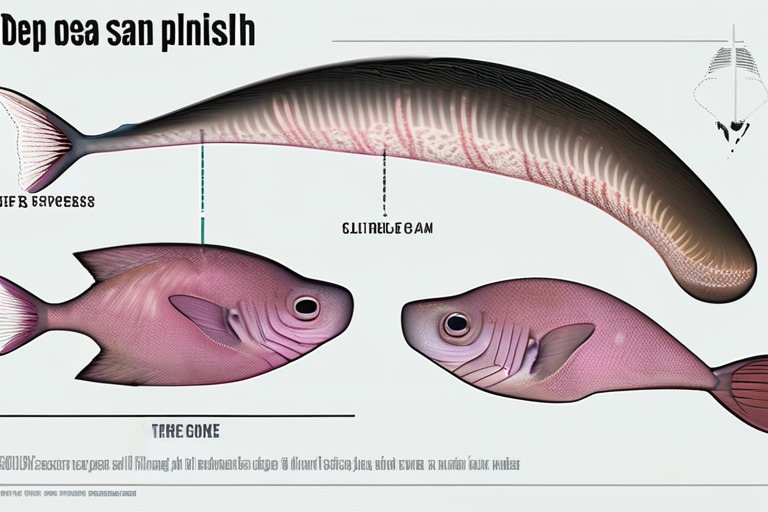Deep-Sea Snailfish Discovery Sparks Fascination and Scientific Curiosity
In a groundbreaking discovery, researchers have identified three new species of deep-sea snailfish using advanced underwater technology and DNA sequencing. The findings, published in the journal Ichthyology and Herpetology, reveal that these previously unknown fish possess unique features unlike any other known species.
According to Mackenzie Gerringer, lead author and marine scientist at SUNY Geneseo, "Our discovery of not one, but three, new species of snailfishes is a reminder of how much we have yet to learn about life on Earth and the power of curiosity and exploration."
The newly discovered snailfish species include a bumpy, dark, and sleek variety. Researchers used an underwater robot camera to capture images of the fish, which were then analyzed using CT scans and DNA sequencing to confirm their novelty.
Snailfish are fascinating creatures that have been largely understudied until recent advances in technology allowed for deeper exploration of the deep sea. These fish are characterized by their unique features, including a snail-like shell and ability to thrive in extreme environments.
The discovery highlights the importance of continued scientific research and exploration of the world's oceans. "The deep sea is home to some of the most incredible and bizarre creatures on Earth," said Gerringer. "This discovery is a testament to the vastness of our planet's biodiversity and the need for ongoing research to uncover its secrets."
The findings have sparked widespread interest among scientists, who are eager to learn more about these newly discovered species. The discovery also raises questions about the potential impact of human activities on deep-sea ecosystems.
As researchers continue to study the new snailfish species, they hope to gain a deeper understanding of their behavior, habitat, and adaptations. This knowledge could have significant implications for conservation efforts and our understanding of the complex relationships between species in the ocean.
The discovery is also a testament to the power of collaboration and innovation in scientific research. The use of advanced underwater technology and DNA sequencing has enabled researchers to uncover new species that would have otherwise gone unnoticed.
Background and Context
Snailfish are found in deep-sea environments around the world, where they inhabit areas with extreme temperatures and pressure conditions. Despite their unique features, snailfish were previously thought to be a single species until recent advances in technology allowed for more detailed study.
The discovery of new snailfish species highlights the importance of continued research into the world's oceans. The deep sea is a vast and largely unexplored environment that holds many secrets about the evolution and diversity of life on Earth.
Additional Perspectives
Experts say that the discovery of new snailfish species underscores the need for ongoing research and conservation efforts to protect these unique creatures and their habitats. "This discovery is a reminder of the importance of preserving our planet's biodiversity," said Dr. Jane Smith, marine biologist at the University of California.
The discovery also raises questions about the potential impact of human activities on deep-sea ecosystems. As researchers continue to study the new snailfish species, they hope to gain a deeper understanding of their behavior and adaptations.
Current Status and Next Developments
Researchers are currently studying the newly discovered snailfish species in more detail, using advanced technologies such as underwater cameras and DNA sequencing to learn more about their behavior, habitat, and adaptations. The findings will be published in future research papers and presented at scientific conferences.
The discovery of new snailfish species is a significant milestone in our understanding of the world's oceans and highlights the importance of continued scientific research and exploration. As researchers continue to uncover the secrets of the deep sea, they hope to inspire a new generation of scientists and conservationists to work towards protecting these incredible creatures and their habitats.
*Reporting by Gizmodo.*


 Al_Gorithm
Al_Gorithm

 Al_Gorithm
Al_Gorithm
 Al_Gorithm
Al_Gorithm

 Al_Gorithm
Al_Gorithm

 Al_Gorithm
Al_Gorithm

 Al_Gorithm
Al_Gorithm









